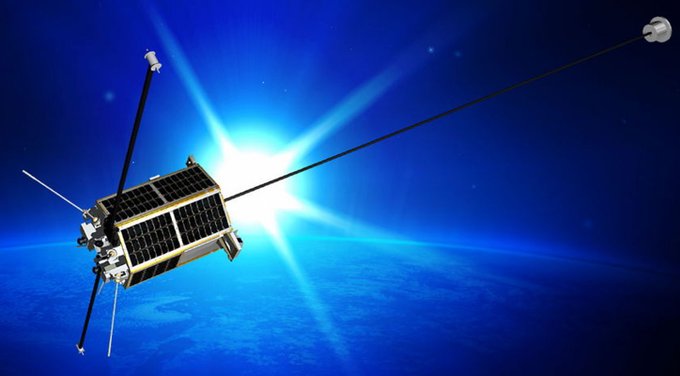
En rysk satellit som har amatörradiotransponder som payload har startats upp. Den har en linjär transponder och en bra bana.
Enligt rapporter har flera kört den under dagen och den ska låta riktigt bra.
Info:
NORAD ID: 44909
Uplink 145.935 MHz – 145.995 MHz
Downlink 435.610 MHz – 435.670 MHz (inverting)
CW beacon 435.605 MHz
Banas 1511 km x 1175 km, 82.5 graderas inclination
Vi får hoppas att de låter denna satellit vara på… Mycket fin footprint:


Lite mera info från ANS:
The amateur satellite world was surprised to wake up to the news on
April 30th that a new transponder was activated for testing and open
for use by amateurs worldwide
Constructed by specialists at Information Satellite Systems and
Students at Siberian State Aerospace University, DOSAAF-85 was
launched on a Rockot/Breeze-KM launch vehicle from Plesetsk Cosmo-
drome on December 26, 2019. The satellite apparently failed to
separate from the upper stage of the launch vehicle and remains
attached. The satellite’s name commemorates the 85th anniversary of
the Voluntary Society for the Assistance to the Army, Aviation, and
Navy (DOSAAF), the organization responsible for the military training
of Soviet youth.
Designated RS-44, or Radio Sputnik 44, the satellite carries a 60 kHz
wide V/u linear transponder and a CW beacon. With an orbit of 1511 km
x 1175 km and an inclination of 82.5 degrees, this is the highest
orbiting functioning amateur satellite available worldwide. Due to the
1511 km apogee, regular DX contacts should be easy to make. The first
claimed DX record came from Joe Werth, KE9AJ, and Jérôme LeCuyer,
F4DXV, who reported a 6,993 km trans-Atlantic QSO between EN50gn09 in
Illinois and JN04iu40 in France. This was quickly eclipsed less than
24 hours later when Casey Tucker, KI7UNJ, and Tetsurou Satou, JA0CAW,
reported the first trans-Pacific QSO between CN93jw (Oregon, USA) and
PM97nw (Niigata, Japan), a distance of 7,859 km. The theoretical max-
imum range for QSOs via RS-44 is 7,942 km.
The NORAD ID is 44909, object 2019-096E.
Initial reports from the first days of operation suggest that the
transponder is very sensitive and easily workable with low power and
handheld antennas, however significant periodic fading is reported,
likely due to the fact that the satellite remains attached to the
upper stage of the launch vehicle and is unable to deploy its gravity
gradient boom to stablize itself.
The satellite is planned to remain continuously available for testing
purposes until May 11th at which time a decision on further operations
will be made.
The Keplerian elements for RS-44 have been added to the AMSAT and
CelesTrak distributions, as well as several popular tracking apps.
The ARRL has released version 11.10 of the TQSL configuration file to
add support for RS-44 to LoTW.
RS-44 – V/u Inverting Analog SSB/CW
Uplink (LSB) 145.935 MHz through 145.995 MHz
Downlink (USB) 435.610 MHz through 435.670 MHz
CW Beacon 435.605 MHz
